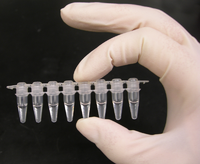
Photo from wikipedia
Organ-specific lymphatics are essential for the maintenance of healthy organ function and lymphatic dysfunction can lead to the development of various diseases. However, the precise role of those lymphatic structures… Click to show full abstract
Organ-specific lymphatics are essential for the maintenance of healthy organ function and lymphatic dysfunction can lead to the development of various diseases. However, the precise role of those lymphatic structures remains unknown, mainly due to inefficient visualization techniques. Here, we present an efficient approach to visualizing organ-specific lymphatic growth. We used a modified CUBIC protocol to clear mouse organs and combined it with whole-mount immunostaining to visualize lymphatic structures. We acquired images using upright, stereo and confocal microscopy and quantified them with AngioTool, a tool for the quantification of vascular networks. Using our approach, we then characterized the organ-specific lymphatic vasculature of the Flt4kd/+ mouse model, showing symptoms of lymphatic dysfunction. Our approach enabled us to visualize the lymphatic vasculature of organs and to analyze and quantify structural changes. We detected morphologically altered lymphatic vessels in all investigated organs of Flt4kd/+ mice, including the lungs, small intestine, heart and uterus, but no lymphatic structures in the skin. Quantifications showed that these mice have fewer and dilated lymphatic vessels in the small intestine and the lungs. Our results demonstrate that our approach can be used to investigate the importance of organ-specific lymphatics under both physiological and pathophysiological conditions.
Journal Title: International Journal of Molecular Sciences
Year Published: 2023
Link to full text (if available)
Share on Social Media: Sign Up to like & get
recommendations!